Our Mushrooms
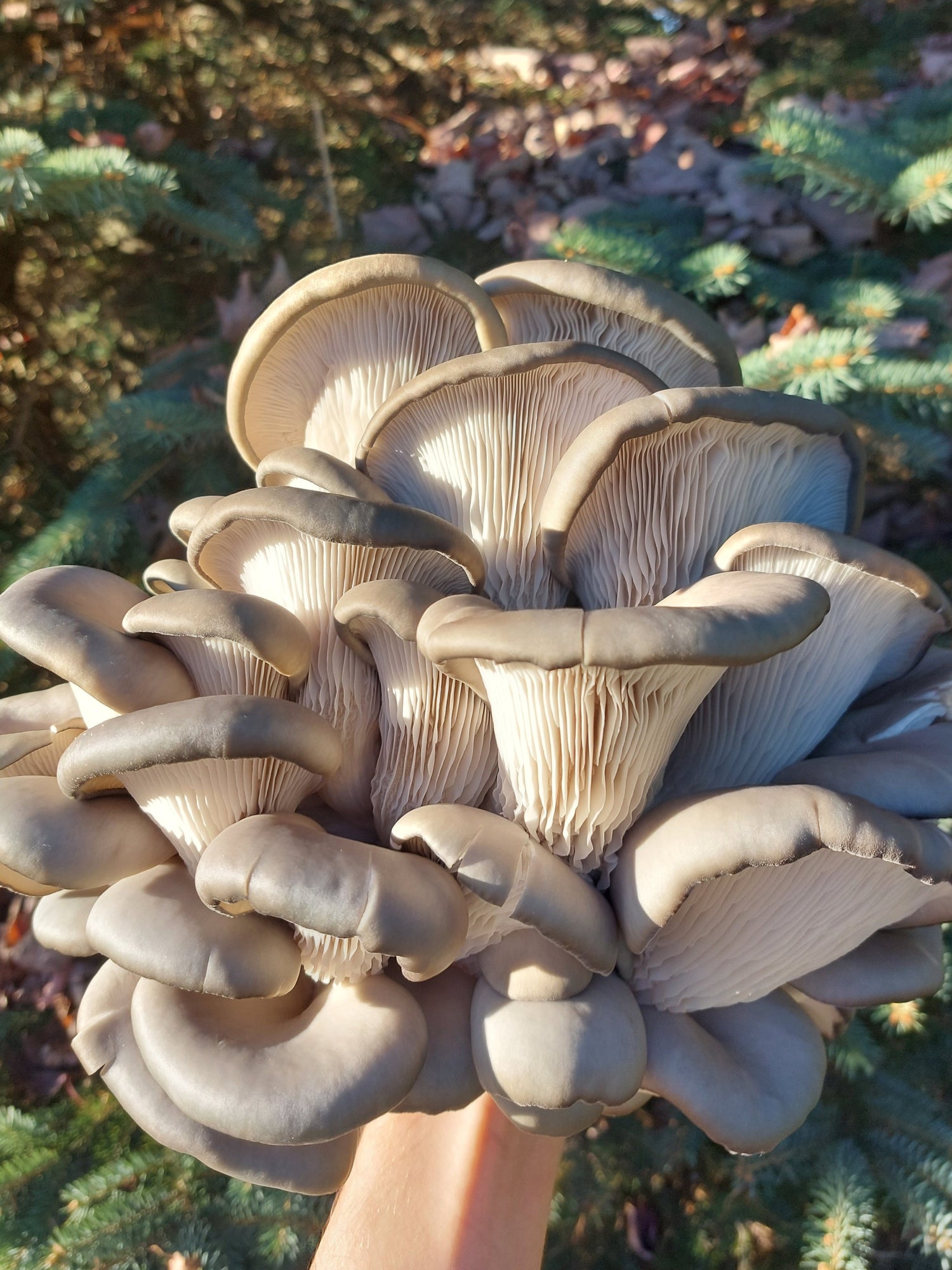
Blue Oyster Mushroom
The Blue Oyster Mushroom (Pleurotus Ostreatus) is a popular edible mushroom characterized by its beautiful gradient of blue-light grey and mild flavour profile. This mushroom is a prized choice for cultivation due to its fast and low maintenance fruiting period. Blue Oyster Mushrooms prefer a cool and humid environment (16-24 degrees Celsius) and grow in clusters on decaying wood, logs, and sawdust.
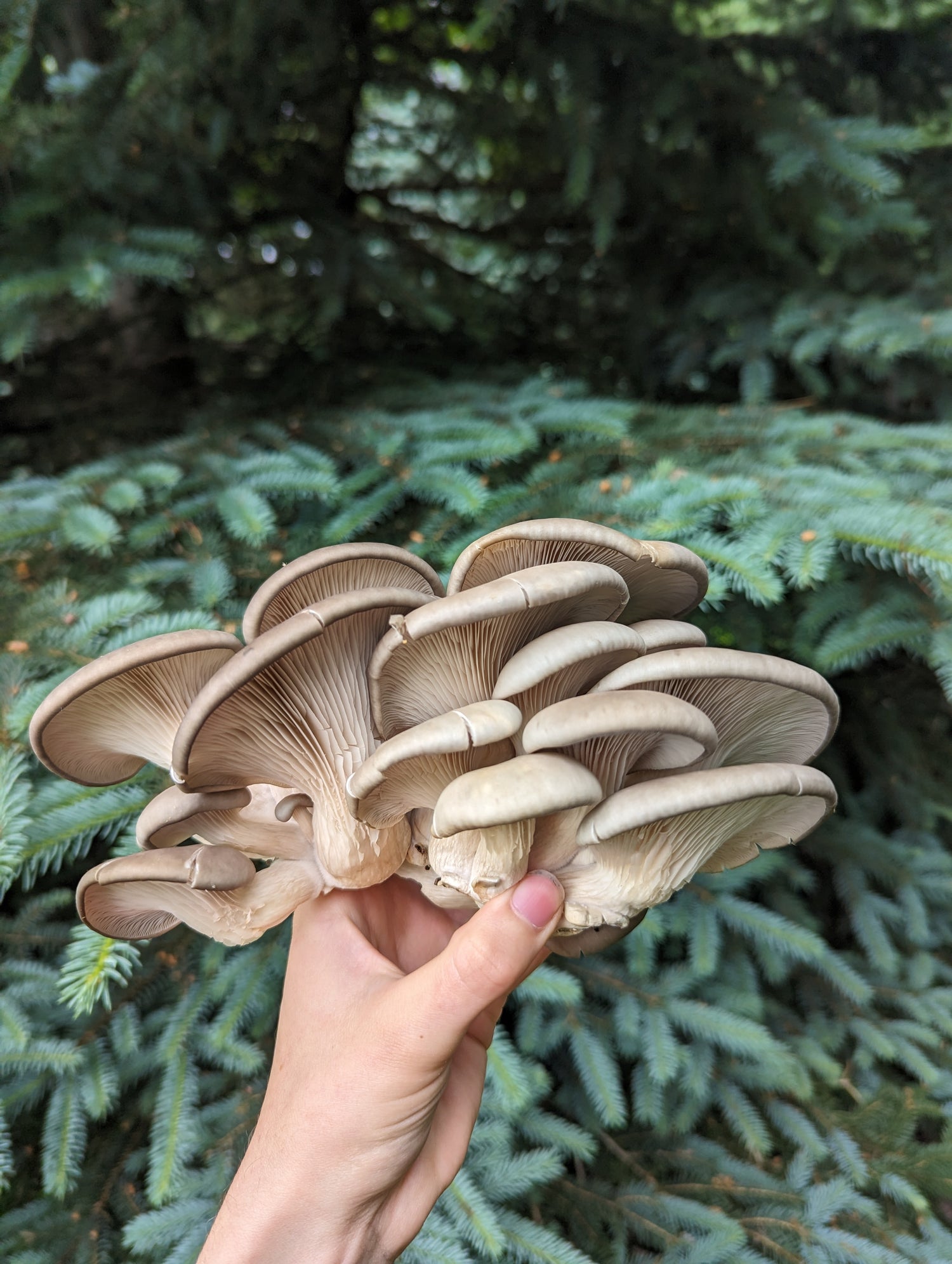
Elm Oyster Mushroom
The Elm Oyster Mushroom (Hypsizygus Ulmarius) is a popular edible mushroom that resembles true oyster mushrooms (Pleurotus spp.) but belongs to a different genus. It is characterized by its pearly white-light fawn appearance and mild flavour profile. This mushroom is a prized choice for cultivation due to its fast and low maintenance fruiting period. Elm Oyster mushrooms can be grown indoors or outdoors (seasonally) and prefer a cool and humid environment. (16-24 degrees celsius). It grows naturally on elm and other hardwood trees often singly or in small clusters rather than dense bunches.
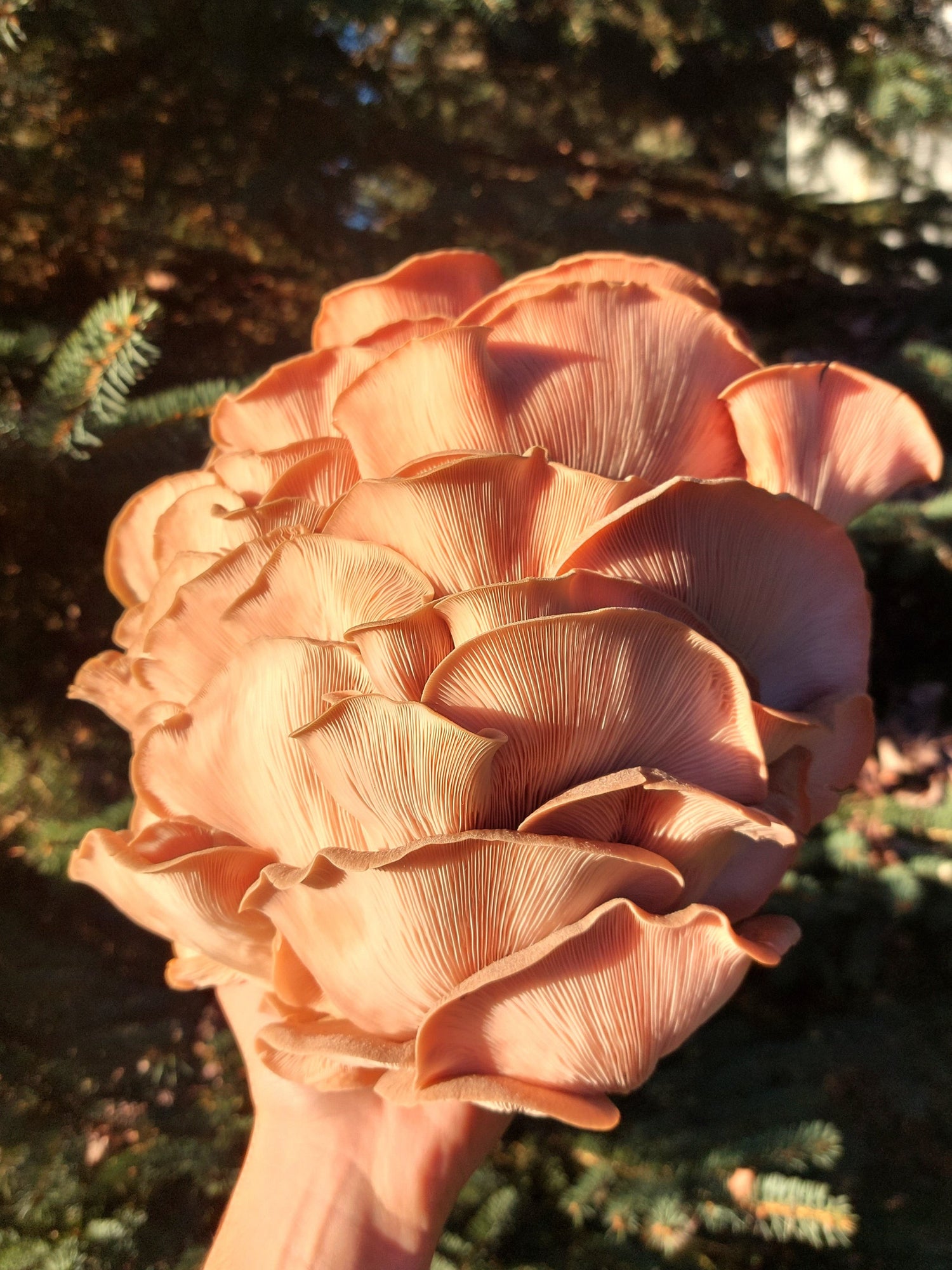
Pink Oyster Mushroom
The Pink Oyster Mushroom (Pleurotus Djamor) is a beautiful edible mushroom characterized by its striking pink flesh and rich and savoury flavour profile. Indigenous to tropical regions, this mushroom requires a warmer environment with high humidity (18-27 degrees celsius) and Grows quickly, often forming large, dense clusters.
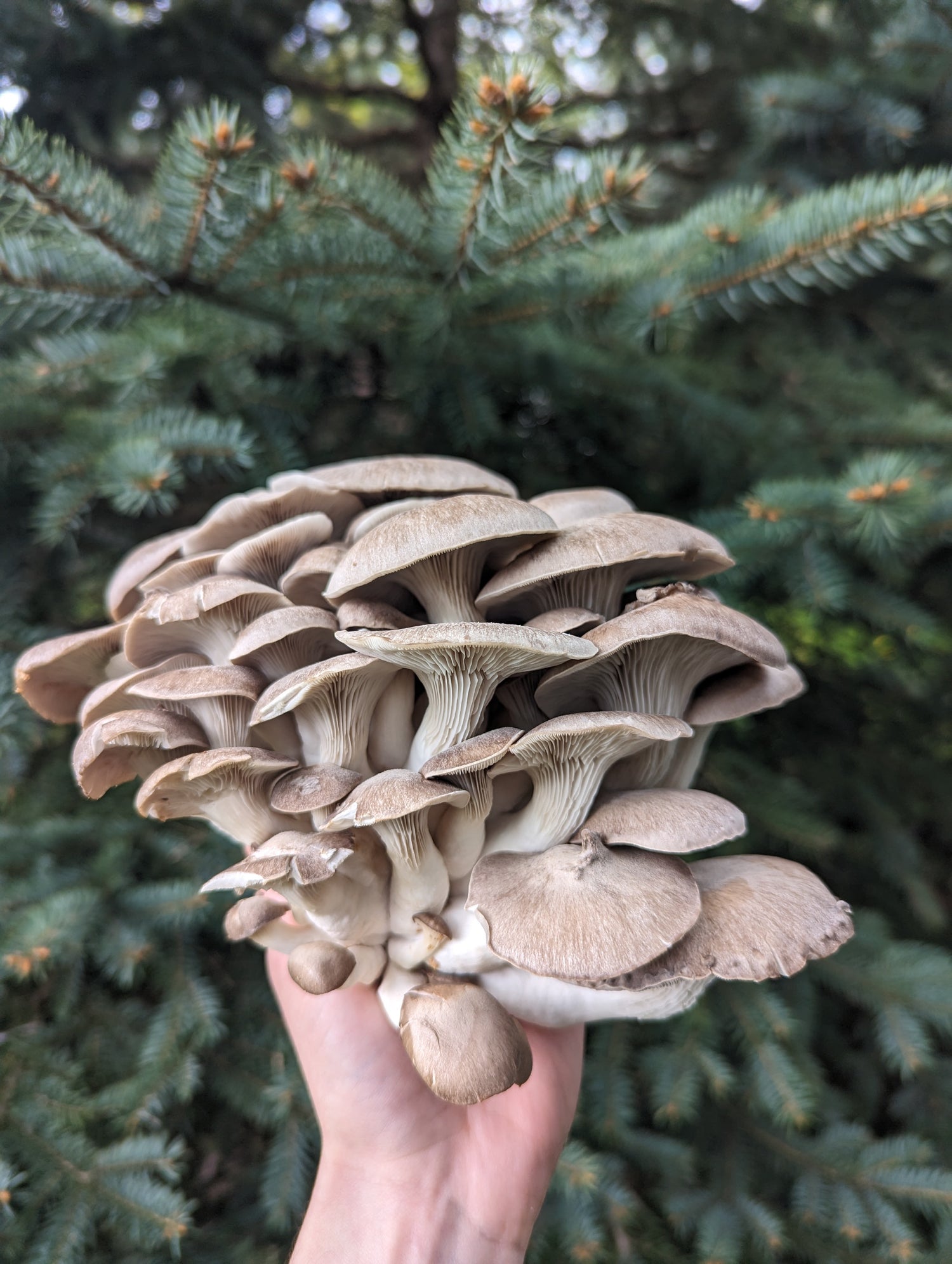
Black Pearl King Oyster
The Black Pearl King Oyster is a hybrid between the King Oyster (Pleurotus eryngii) and a traditional Oyster Mushroom (Pleurotus ostreatus). It combines the best traits of both, offering excellent flavour, texture, and ease of cultivation. This mushroom prefers cooler temperatures (13–18°C) and develops in clusters, similar to oyster mushrooms, but with a more robust, upright growth like true king oysters.
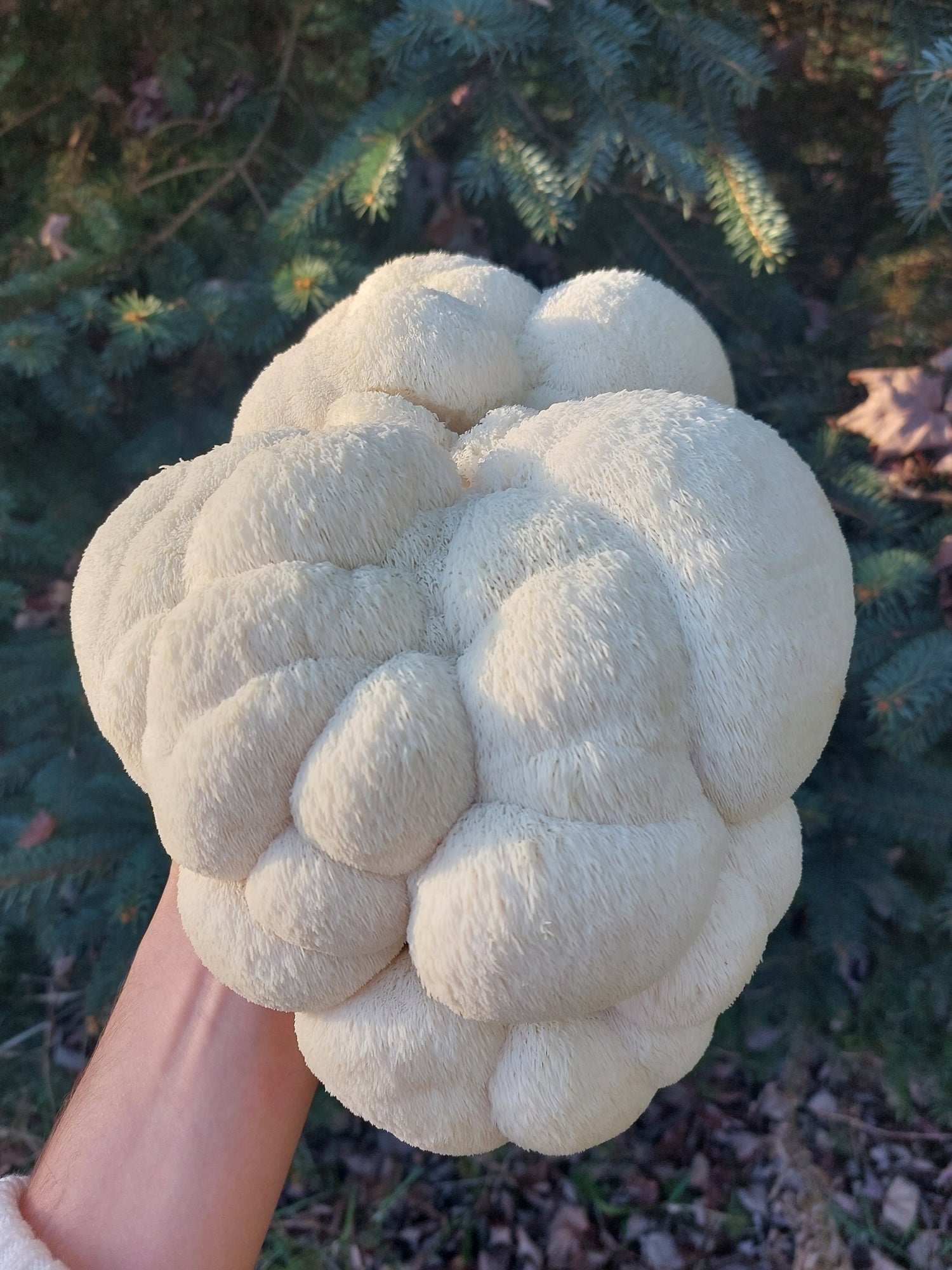
Lion's Mane Mushroom
The Lion’s Mane Mushroom (Hericium Erinaceus) is a delicious and popular edible mushroom characterized by its unique appearance, resembling a ‘lion’s mane’ as well as its celebrated medicinal properties. This mushroom prefers a warm and humid environment (18-24 degrees celsius) and grows naturally throughout North America, Europe, and Asia on hardwood trees (oak, beech, maple) as a saprotroph or weak parasite.
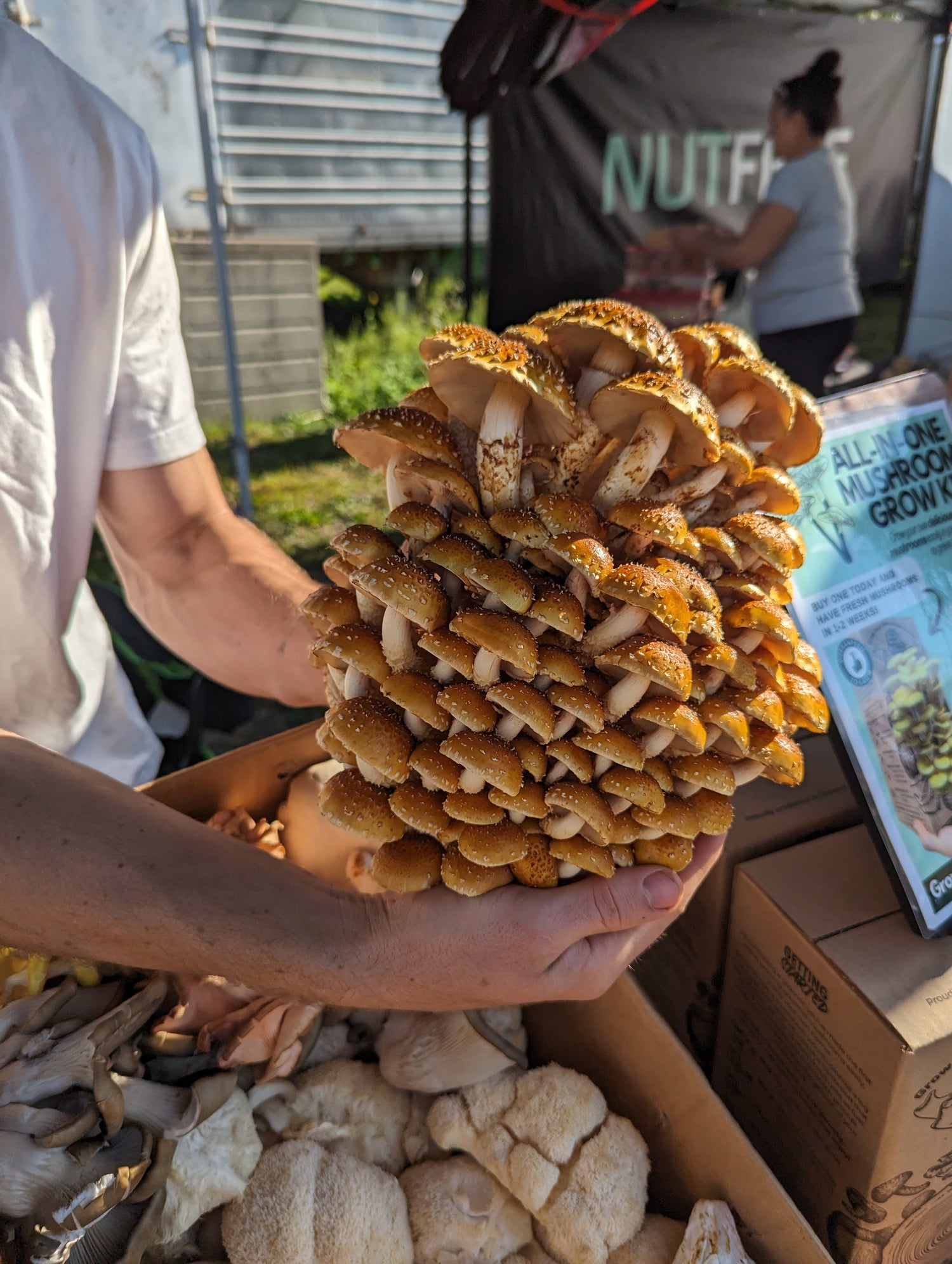
Chestnut Mushroom
Chestnut mushrooms (Pholiota adiposa) are a lesser-known but highly prized gourmet mushroom with excellent texture and flavour. Naturally found on decaying hardwood trees, such as oak and beech.Prefers cool, humid conditions (55–65°F or 13–18°C).

Pioppino Mushroom
The Pioppino mushroom, also known as the Black Poplar mushroom, is a gourmet edible mushroom valued for its earthy flavour and firm texture. It is popular in Mediterranean and Asian cuisines. This mushroom prefers mild temperatures (13–21°C) and grows naturally on decaying hardwoods like poplar, oak, and willow.
